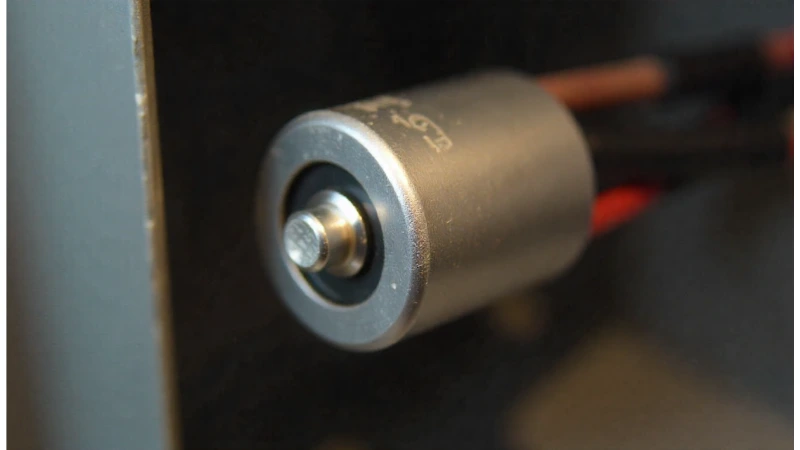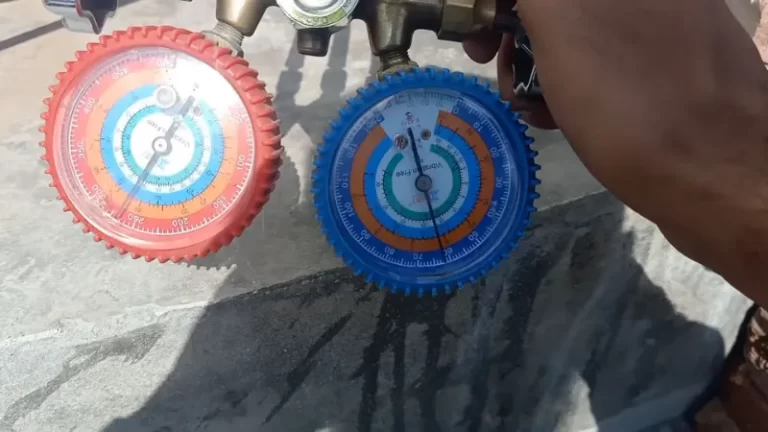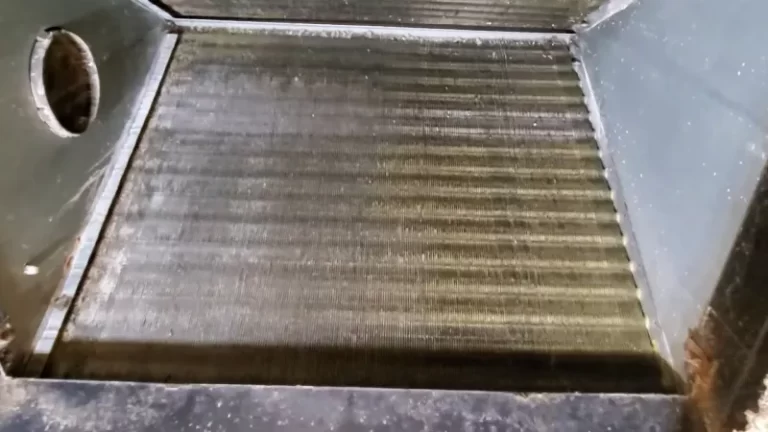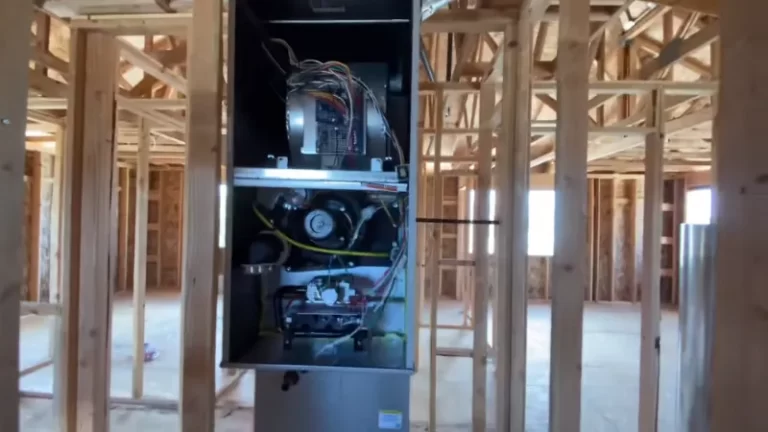Furnace Blower Motor Slow to Start? Top 5 Reasons and Fixes
That unnerving hum, followed by a delayed “whoosh”—a furnace blower motor slow to start is a classic sign of trouble brewing within your HVAC system. When your furnace hesitates, it’s not just an annoyance; it’s a warning. Ignoring this symptom can lead to a complete system breakdown, often during the coldest days of the year, resulting in costly emergency repairs. Understanding the root cause is the first step toward a reliable and efficient heating system.
This comprehensive guide will walk you through the most common culprits behind a lazy blower motor, from simple fixes to more complex mechanical issues. We will explore why this happens and provide clear, actionable steps to diagnose and resolve the problem, empowering you to take control of your home’s comfort and safety.
You'll Learn About
Understanding the Blower Motor’s Crucial Role
Before diving into troubleshooting, it’s essential to appreciate the blower motor’s job. This powerful component is the heart of your furnace’s forced-air system.
It’s responsible for pulling air from your home through the return vents, pushing it across the heat exchanger to be warmed, and then distributing that heated air throughout your living spaces via the ductwork. When it’s slow to start, this entire process is compromised, impacting both comfort and efficiency.
The Telltale Signs of a Struggling Blower Motor
A delayed start is the primary symptom, but it rarely comes alone. Pay close attention to other warning signs that can help you pinpoint the issue more accurately. You might notice a humming or buzzing sound from the furnace cabinet moments before the fan finally kicks on. Other indicators include weak airflow from your vents, the unit overheating and shutting down, or unusually high energy bills as the motor struggles to perform its function.
Top 5 Causes for a Furnace Blower Motor Slow to Start
Several issues can prevent your blower motor from starting promptly. Here, we break down the most frequent offenders, ranging from simple electrical components to the motor itself.
1. A Failing Run Capacitor
This is the most common cause of a slow-starting blower motor. The run capacitor is a small, cylindrical component that provides the necessary electrical torque to start and run the motor. Think of it as a battery that gives the motor a powerful jolt to get it spinning. Over time, these capacitors degrade and lose their ability to hold a sufficient charge.
When the capacitor is weak, the motor will struggle to overcome inertia. You’ll often hear it hum as it tries to start before finally, and slowly, beginning to turn. Replacing a run capacitor is a relatively inexpensive fix, but it involves working with high-voltage components, so caution is paramount. If you’re not comfortable with electrical work, this job is best left to a qualified HVAC technician.

2. Worn-Out Motor Bearings
Inside the blower motor are bearings that allow its shaft to spin freely and smoothly. Over years of operation, these bearings can wear out due to friction and a breakdown of lubrication. When the bearings are worn, they create increased resistance, making it much harder for the motor to start spinning. A telltale sign of bad bearings is a squealing or grinding noise that accompanies the motor’s operation.
In some older motors, the bearings have ports for lubrication, and adding a few drops of specialized motor oil can sometimes resolve the issue. However, most modern furnace blower motors are permanently sealed and cannot be lubricated. In these cases, the entire motor will need to be replaced.
3. Dirt and Debris Buildup
Your furnace moves a massive volume of air, and with that air comes dust, pet dander, and other debris. A dirty air filter is the first line of defense, but if it’s not changed regularly, this grime can make its way to the blower assembly itself. An accumulation of dirt on the blower wheel (the “squirrel cage”) can throw it off balance and add significant weight.
This extra load forces the motor to work harder, which can lead to a slow start. Regularly replacing your furnace filter is the single most important maintenance task you can perform. If the blower wheel is already heavily coated, it will need to be carefully cleaned, a task that often requires removing the entire blower assembly for proper access.
4. Electrical and Wiring Problems
Sometimes the issue isn’t the motor or its components but the electrical supply. A loose wire, a corroded connection, or a failing control board can all lead to insufficient voltage reaching the motor, causing it to struggle on startup. These issues can be intermittent, making them tricky to diagnose. For instance, sometimes an issue with reversed polarity on the furnace can create unpredictable electrical behaviors in the system.
A visual inspection of the furnace’s wiring might reveal an obvious problem, but often these issues require a multimeter for proper diagnosis. Tracing electrical faults can be complex and dangerous; if you suspect an electrical issue, it is highly recommended to contact a professional. Problems with system components, like those leading to Payne furnace code 12 errors, often stem from underlying electrical or control board failures.
5. An Aging or Failing Motor
Unfortunately, like any mechanical component, a blower motor has a finite lifespan. The constant starting, stopping, and running takes its toll. After 10-20 years of service, the internal windings of the motor can start to fail, leading to a variety of symptoms, including a slow start. The motor may also overheat, causing the furnace’s safety limit switch to trip and shut the system down.
If you have ruled out the capacitor, bearings, and dirt buildup, and the motor is still struggling, it may be nearing the end of its life. Replacing the blower motor is a more significant repair and can be costly, but it’s essential for the continued operation of your furnace.
Troubleshooting Your Slow Blower Motor: A Step-by-Step Guide
Before calling for professional help, you can take a few safe and simple steps to diagnose the problem. Always begin by turning off all electrical power to your furnace at the circuit breaker. Safety must be your top priority.
Step 1: Inspect and Replace the Air Filter
This is the easiest and most crucial first step. Remove your current air filter and check its condition. If it’s clogged with dirt, replace it with a new, clean one. A severely clogged filter can restrict airflow so much that it puts a massive strain on the blower motor, potentially causing it to start slowly.
Step 2: Visually Inspect the Blower Assembly
With the power off, open the furnace access panel. Look at the blower wheel. Is it caked with dust and grime? If so, this buildup is adding weight and resistance, contributing to the slow start. Cleaning it is a more involved job, but identifying it as the problem is a key diagnostic step.
Step 3: Listen Closely During Startup
After restoring power, have someone else adjust the thermostat to call for heat while you listen near the furnace. Do you hear a distinct “hum” for several seconds before the fan starts? This is a classic symptom of a bad run capacitor. If you hear grinding or squealing, the motor bearings are the likely culprit.
Your Furnace Blower Motor Troubleshooting Chart
Use this table as a quick reference to match the symptoms you are observing with the most probable causes and recommended actions. This can help you decide whether to tackle the issue yourself or call in a professional.
| Symptom | Most Likely Cause | Recommended Action |
|---|---|---|
| Motor hums for a few seconds, then starts slowly. | Failing Run Capacitor | DIY Possible (with caution). Turn off power, discharge the old capacitor safely, and replace it with an identical one. Or, call an HVAC technician. |
| Squealing or grinding noise during operation. | Worn Motor Bearings | Professional Repair Recommended. The motor will likely need to be replaced. Some older models may be serviceable. |
| Weak airflow from vents and a visible dirty blower wheel. | Dirt and Debris Buildup | DIY Possible. Turn off power, remove the blower assembly, and clean the wheel thoroughly. Can be a time-consuming job. |
| No specific noise, but starting is intermittent or inconsistent. | Electrical or Control Board Issue | Professional Repair Required. Diagnosing control boards and wiring requires specialized tools and expertise. Certain system-specific issues, like Concord furnace pressure switch problems, are often tied to the control board logic. |
| Motor feels hot to the touch and furnace shuts down periodically. | Aging/Failing Motor | Professional Repair Required. A motor that is overheating is a serious issue and needs to be replaced by a qualified technician. |
When to Call a Professional HVAC Technician
While replacing an air filter is a simple DIY task, many of the other causes of a slow-starting blower motor require technical expertise. You should always call a professional if you are uncomfortable working with electricity. Capacitors can hold a dangerous electrical charge even when the power is off, and incorrect wiring can cause permanent damage to your furnace.
A qualified technician has the diagnostic tools, such as a multimeter with a microfarad setting, to test components like the run capacitor accurately. They can also quickly and safely replace a worn-out motor, ensuring the new one is correctly installed and wired for safe, efficient operation. Investing in a professional repair guarantees the job is done right and restores your peace of mind.
The Cost of Ignoring the Problem
A furnace blower motor that is slow to start is not just an inconvenience—it’s a system under stress. Continuing to run your furnace in this condition can lead to a cascade of failures. The struggling motor can overheat, tripping safety switches and potentially damaging the motor’s windings beyond repair.
This added strain can also cause stress on the furnace control board, leading to a much more expensive repair down the line. Addressing the issue promptly is always the most cost-effective solution.



